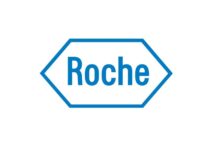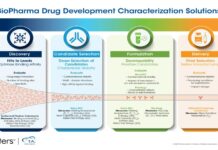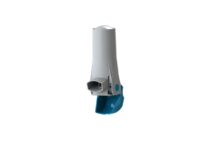Pharma specialty chemicals companies have been experiencing serious challenges based on the greening regulations enforced by the European Union. Such regulatory systems promote the harmonization of environmental stewardship and industrial development, yet they have become complex for the specialty chemical makers of compounds fundamental to pharmaceutical production. Foremost among these are the REACH (Registration, Evaluation, Authorisation, and Restriction of Chemicals) regulations, underpinning the EU’s green agenda for developing a more environmentally friendly chemical sector.
The adoption of REACH and allied frameworks has revolutionized the way specialty chemical producers evaluate, make, and market their products. Though the ultimate objective of safeguarding human health and the environment is commendable, the adaptations necessary to adhere to these rules have ushered in immense monetary and business implications for the sector.
The Essence of REACH Regulations
The 2007 REACH regulation is the EU’s main legal tool for registering, evaluating, and restricting chemicals. It requires producers and importers of chemical substances to collect extensive information on the characteristics of their chemicals and to register them with the European Chemicals Agency (ECHA). The aim is to determine early on if substances possess a dangerous potential, to control or phase them out.
For specialty chemical producers of pharmaceuticals, these rules call for large-scale testing and documentation. Materials that exceed one tonne annually in production must have thorough evaluation of their risks and effects. This has been especially difficult for producers of niche compounds for pharmaceuticals, where both time and funds are limited.
Additionally, the REACH regulation encourages substitution of dangerous chemicals with safer substitutes, compelling formulators and producers to innovate formulation and manufacturing techniques. Although this encourages innovation in greener ways of producing chemicals, it imposes a significant cost burden, especially on small and medium-sized enterprises (SMEs) that have limited financial and technical capabilities to respond swiftly.
Implications for Specialty Chemical Manufacturers
Pharmaceutical specialty chemical makers, already facing pressure to meet high standards of quality and safety, now encounter further financial and operational challenges. Meeting REACH requirements involves expensive testing, longer product lead times, and supply chain complexities. Industry reports state that the compliance cost of registering one chemical under REACH may vary between €50,000 and €500,000 based on the complexity of the substance.
Also, REACH legislation has contributed to market fragmentation. Non-compliant producers can be debarred from the EU market, which lowers competitiveness and access to the market. Specialty chemical suppliers catering to global pharma companies need to ride out these regulatory variations, which increases operational complexity.
A specific issue is the process of authorisation for substances identified as being of very high concern (SVHC). They encompass carcinogens, mutagens, and reproductive toxins. The industry has to show that risks can be sufficiently controlled or that socio-economic advantages override the risks. For most manufacturers, it is a significant undertaking in terms of research, consultations with stakeholders, and public consultations.
Driving Innovation in Sustainable Practices
In spite of these obstacles, the EU green regulations have accelerated innovation in the pharmaceutical specialty chemical industry. Companies are becoming more inclined towards green practices in order to comply with regulatory requirements and consumer demand. For example, principles of green chemistry are being incorporated into the synthesis of specialty chemicals, with a focus on minimizing waste, renewable materials, and energy efficiency.
Nanotechnology is set to become a game-changer in reducing specialty chemicals’ environmental impact. Nano-specific clarifications introduced under REACH Annex revisions have spurred manufacturers to look for nanomaterials with better performance and reduced toxicity. Not only do these innovations comply with stricter regulation but also enable manufacturers to be leaders in sustainable chemical solutions.
In addition, the transition towards digitalization has been a turning point. Digital twins and data analytics on a higher level allow manufacturers to streamline manufacturing processes, track conformity, and predict environmental effects. The European Chemicals Agency’s central database also supports transparency, with manufacturers and consumers having easy access to chemical safety data.
Global Implications and Market Dynamics
The impact of the EU’s green policies reaches beyond the continent, shaping the dynamics of the global marketplace. Exporting pharmaceutical specialty chemical companies to the EU are required to adhere to REACH and others like it, resulting in uniform standards within regions. The spillover effect promotes global cooperation in environmentally friendly practices, spurring innovation and competitiveness.
But regulatory divergence across markets remains an issue. While the EU green regulations enforces demanding environmental norms, other markets can fall behind in implementing similar frameworks. This gap can create a competitive imbalance, where producers in non-conforming markets enjoy cost benefits.
Future Outlook and Strategic Adjustments
In the future, the pharmaceutical specialty chemical industry will have to adjust strategically to survive under the green regulatory environment of the EU. Producers will have to:
- Invest in Research and Development: Sustained innovation in green chemistry and sustainable production processes will be key. Breakthrough solutions can be catalyzed through cooperation with academia and technology companies.
- Improve Supply Chain Resilience: Compliancy throughout the supply chain demands solid tracking systems and collaboration with sustainable suppliers. Traceability and transparency will be vital to fulfilling regulatory requirements.
- Harness Digital Technologies: Artificial intelligence, IoT, and blockchain can automate compliance processes, rationalize resource usage, and give real-time information on environmental footprints.
- Advocate Through Industry Collaboration: Unified advocacy can enable realistic and well-balanced regulations and ensure the industry voice is represented in policymaking processes.
Conclusion
The EU green regulations, led by the REACH regulatory scheme, has certainly transformed the pharmaceutical specialty chemical sector. Although regulatory challenges are significant, the move towards sustainability offers fresh chances for innovation and leadership. By adopting green practice and capitalizing on advances in technology, producers can not only cope with the regulations but also become the pacesetters in sustainable chemical manufacture.
The way forward demands strategic vision, capital investment in innovation, and collaboration among stakeholders in developing a resilient and sustainable pharmaceutical specialty chemical industry.




















